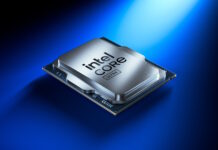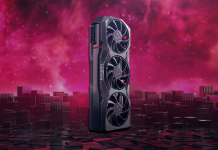A couple of weeks ago we were one of the first sites with a preview of the ATI 9800 Pro 128 MB, today we have the honour to present the fighter in the other corner: GeForce FX 5800 Ultra 128 MB. The card we have gotten our hands on was made by Gainward and is named Ultra/1000 Plus Golden Sample.
A couple of weeks
ago we were one of the first sites with a preview of the ATI 9800 Pro
128
MB, today we have the honour to present the fighter in the other corner:
GeForce FX 5800 Ultra 128 MB. The card we have gotten our hands
on was made
by
Gainward
and is named Ultra/1000 Plus Golden
Sample.
The ever so late FX got a rather cold reception by the press at first,
but much has happened since then. Firstly, this is a real retail board
and secondly nVidia just released new drivers. Maybe these two factors
can
affect our present view of this often discussed product.
Before going on to the next part we want to point out that we have had the
card during about 4 hours for testing. Because of this, we did not have
enough time to run every benchmark we planned, neither did we have time
to clock the card down to "non-Ultra"-speed.
Let’s take a look at the specifications.
There has been
a lot of talk going on about the upcoming FX 5800 Ultra Golden Sample
from
Gainward. To mention some; the more quiet cooling and the included sound
card(!) have aroused a lot of interest. One thing’s for sure; Gainward
has definitely
not been saving on accessories. And finally they’ve put some effort into
a more “mature” box design, no more sci-fi space chicks.
| | |
| Graphics chip: | NV30 |
| Manufacturing: | 0.13-micron |
| Number of transistors: | ~125 million |
| GPU clock: | 500 MHz |
| Memory clock: | 1000 MHz / 15.6 GB/s
|
Pixel Shader: |
2.0
|
Vertex Shader: |
2.0
|
Pixel Pipelines/Pixel Fillrate: |
4
/ 2000 MP/s |
Texture units(for every pipeline)/Texel Fillrate: |
2
/ 4000 MT/s |
| Ramdac: | (2) 400 MHz |
| Memory size: | 128 MB |
| Memory type : | 128-bit, DDR-II |
| I/O’s: | VGA, DVI-I, S-Video Ut |
| Extra hardware: | 5.1-Soundcard,
|
| Software: | Driver-CD, Demo CD for the soundcard etc. |
| Full version software: | Duke Nuke ‘Em Manhattan Project, WinCinema etc. |
| Estimated price: | ~$500+ |
|
|
We have not
yet had any deep introduction of the NV30 architecture on NordicHardware,
but now, as the chip has been around various websites for preview we don’t
feel very compelled to spend much time looking at the techical aspects
of GeForce FX. Instead we choose to focus the whole retail product. Nevertheless,
a few
comments
on the
architecture
won’t hurt. For example that this chip supports DirectX 9.0 and that nVidia
took one step further by having partial support for Pixel Shader and Vertex
Shader 2.0 Extended. From what we’ve gathered, nVidia didn’t quite make
it
all the way, thus they chose to call it 2.0+ which isn’t a “real” DirectX
standard. Weather the extended support for DirectX will be used or not
remains is yet to be seen.
A look at the
specifications says a great deal. As the most probably knows nVidia has
chosen
to go after insane clock frequencies this time. A core at 500 Mhz gives the
card an incredible high fillrate. Certainly some complications exist, making
NV30
not really a fully fledged 8×1 architecture, but since this isn’t a first
look at the technology itself, just a usual “retail-review”,
we will spend less time on this. The fillrate is high, in many cases even
higher
than
Radeon
9800 Pro
can offer, especially if we look at Texel Fillrate.
nVidia has, as you might know, chosen to equip NV30
with a 128 bit memory bus. To compensate this nVidia uses DDR-II memories
from
Samsung clocked at 1 GHz. Together with a 128 bit bus this means that the
card has a bandwidth of approximately 16 GB/s which is somehwat less
than the challengers Radeon 9700 Pro and 9800 Pro.
|
|
|
One of the truly
nice things with this package is that along with the card you get a 5.1-soundcard.
The chip is produced by C-Media and though we didn’t manage to find the exact
model on their web-page, you can read more about the sister model here,
the specifications are should be roughly the same. The soundcard has Coaxial
In/Out, Digital
In/Out, GamePort and all other things you can expect of a fashionably soundcard.
An unexpected but welcomed accessory.
In the image
above you can see the two included cards. The soundcard is as mentioned
based on
C-Media, the firewire card is on the other hand based on a VIA chip. There
isn’t much to say about the quality on the firewire card; it does what
it’s
supposed to do. Aan optic cable is included with the soundcard, and a firewire
cable is also present.
As you can see
the pack of goodies that is shipped along with this product is for the
most part the standard
stuff. However, the three things that stand out in this product are the soundcard
and the firewire card and the quite strange headphones. I’ve never seen
anything like the headphones really; you clip them to
your ear, so they’re something between the “earplugs” and headphones. The
sound is alright, but the fit isn’t really the greatest to say the least.
One of the problems is that they don’t fit close enough, so all “outside”
noise is still very audible.
For video editing,
DVD-playback etc. the application bundle WinCinema by Intervideo is included.
Intervideo’s products usually keep a high quality, especially in the aspect
of image quality.
One of the stranger
things Gainward has chosen to include in the package is the quite elderly
Duke Nuke Em Manhattan Project. Far and forgotten from a critics vision.
Along
with the soundcard you also get a CD with, among other things, a surround
tester. Of course among the CD’s there is the common driver CD as well
as some other stuff like Gainward’s own overclocking software. Other than
that you get the manuals for the graphics, sound and firewire cards.
As you can see
in the picture you get a molex y-connector. This is for the external power
supply connection the NV-30 chip requires. The card pulls out an amazing
65-70 watts so the extra push from the external power chord is surely
there because
it’s needed. A 256 MB version of the card would have required up to almost
100 watts so nVidia and the companies who build the card have taken it
easy
with those
versions, which is probably quite natural, as not even today’s high-end processors
consume such amounts of power yet.
Gainward has
chosen to equip the card with one VGA- and one DVI-output unlike from
their earlier products with dual-DVI. Maybe this is because this FX card
is a “reference” board from nVidia. The TV-out is a S-Video output, and
as usual
you get a S-Video to Composite adapter in the package.
In the picture above you also see the outlet for the cooling. You can read
about how Gainward’s own version of FlowFX is performing on the next page.
Gainward has
as usual supplied us with a complete and high quality package of extra hard-
and software. The only thing we could miss would be a good game and Composite/S-Video
In, but that is just trifles.
|
Accessories/Features
|
||
| We look at the amount and usefulness for included accessories and integrated features. |
|
|
When it comes
to accessibility this product has some huge problems. Even if many Internet
stores have had these cards on their pricing lists for about a month or
even
longer it is practically still impossible to get a GeForce FX at this moment.
The retailers who had FX boards in stock have had very limited stock of
like 5-10 cards.
The price is also a little bit too high for a product of this class. For
about $650 you can buy a Radeon 9700 and a fast processor. On the other
hand
the Radeon 9800 Pro came out in a few stores, and the price for those is
not very nice either, about $550 for the R350.
Something that argues for this high price is a extra hardware like the firewire
card, a sound card and a pair for headphones. All these three components
are
valued to about $50 – $100 which still leaves us with a card more expensive
than most other competitors.
|
Price/Accessibility
|
||
| We compare the price to equal products and even the accessibility among retailers. |
|
|
|
|
Now we’ve
reached a hot topic, pun intended, namely cooling. Most of you have probably
heard the horror
tales about FlowFX’s high sound level and its extreme heat generation by
now. Well, at least Gainward has succeeded a little bit better than nVidia
when
it comes to cooling. The card makes 7 to 9 decibels less noise than
nVidia’s reference design.
Despite the noise reduction the cards fan still makes a lot of sound. More
than any graphic card and CPU cooler we ever tried. Though this is only
when we use it in 3D mode. When in 2D mode the card underclocks
itself and the fan slows down. While doing that, the card is silent, so
silent that I can’t separate it from my CPU fan (~20dB), which is more
than
OK.
|
|
As the picture
show, we see that the plastic cover above the heatsink doesn’t cover
the
sides. This will allow for the air to push against the chip and then quickly
move away. In the picture below we see the core of FlowFX’s design. Through
the plastic cover the air is let out of an opening on the back of the
computer.
However Gainward opted not to have both out and intake apparently.
|
|


























































.jpg)
.jpg)
.jpg)
.jpg)


.jpg)
.jpg)
.jpg)
.jpg)
.jpg)
.jpg)
.jpg)
.jpg)


.jpg)
.jpg)
































